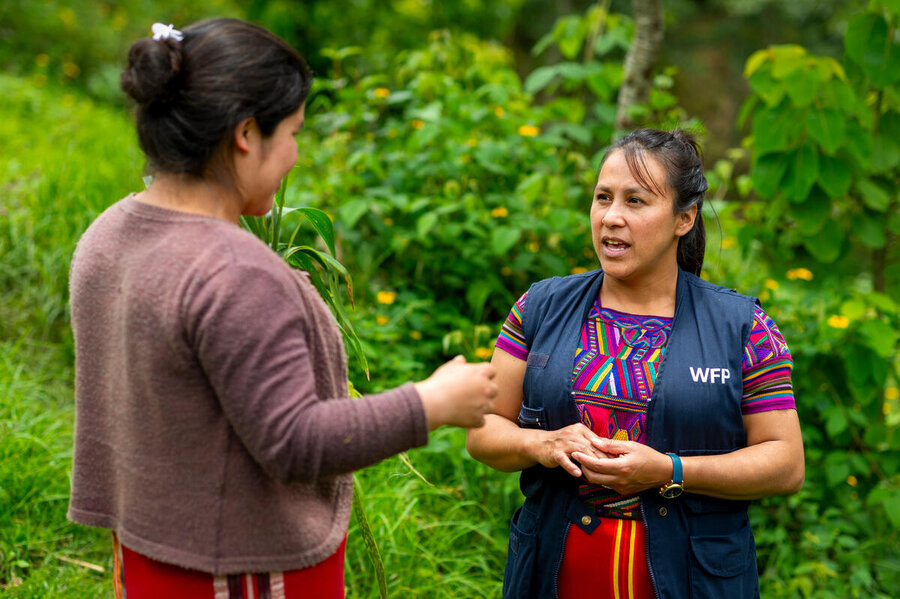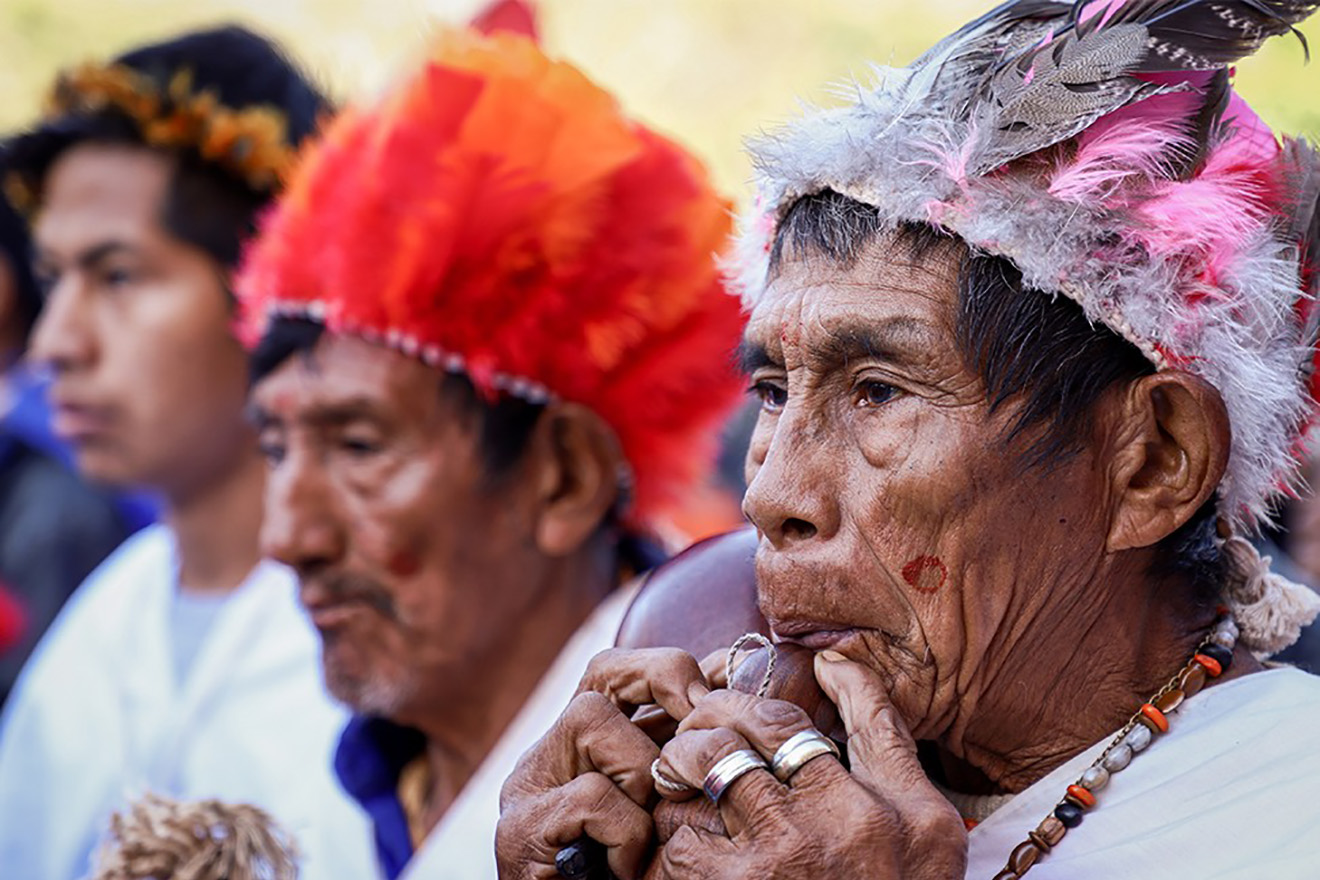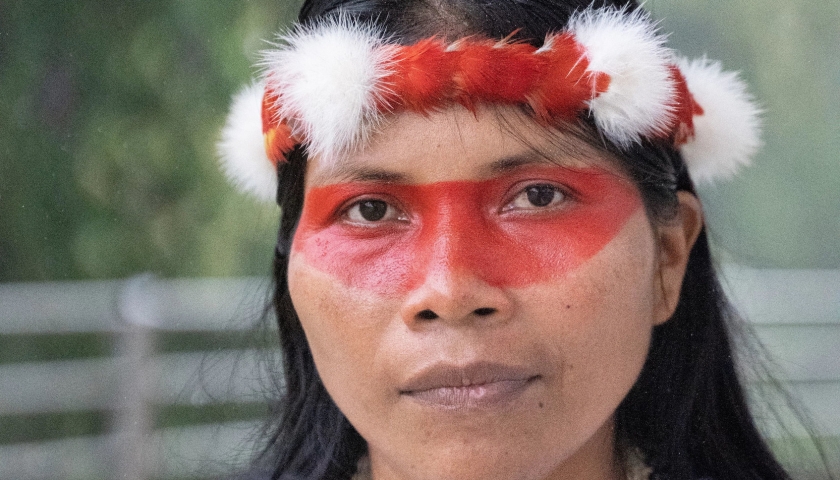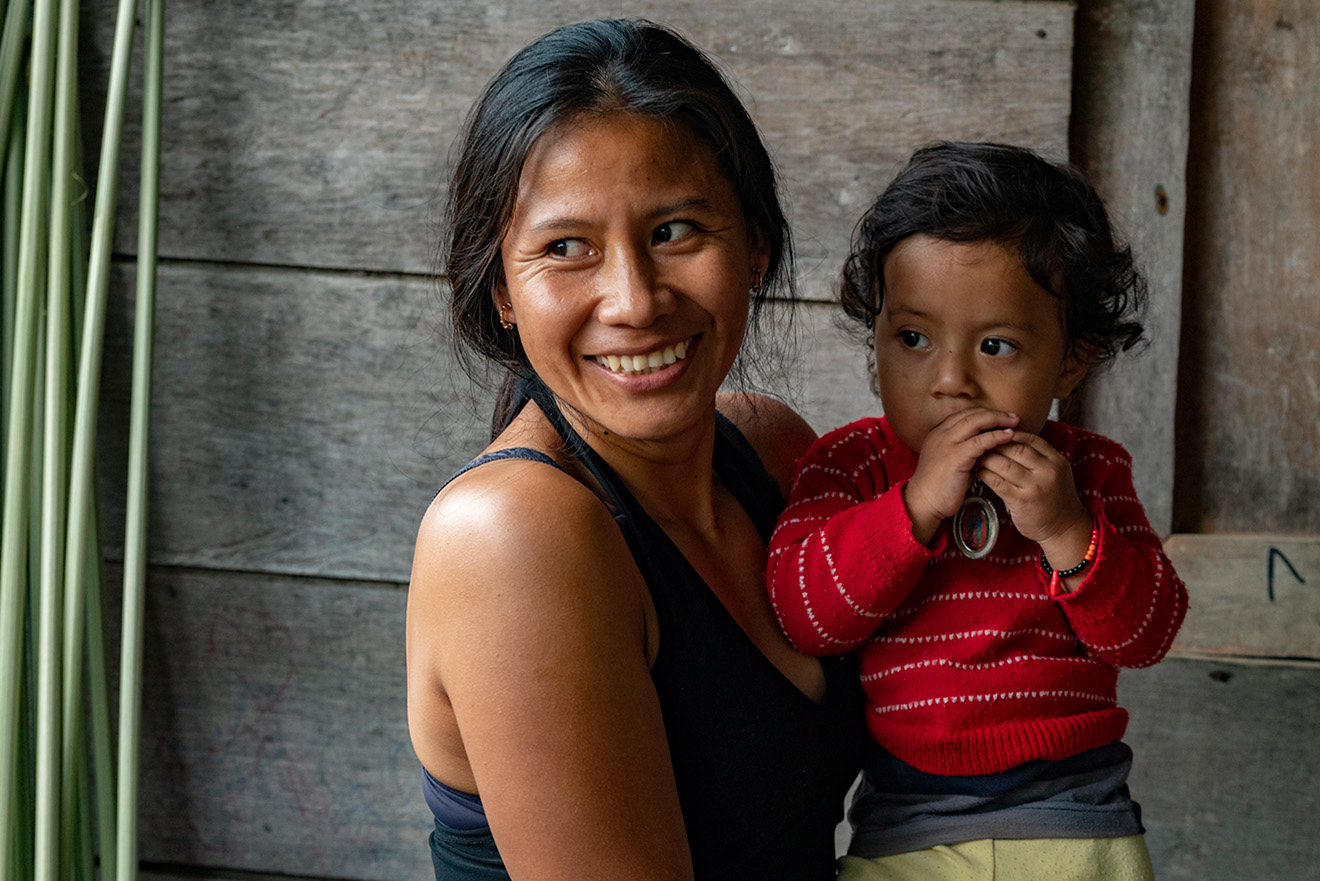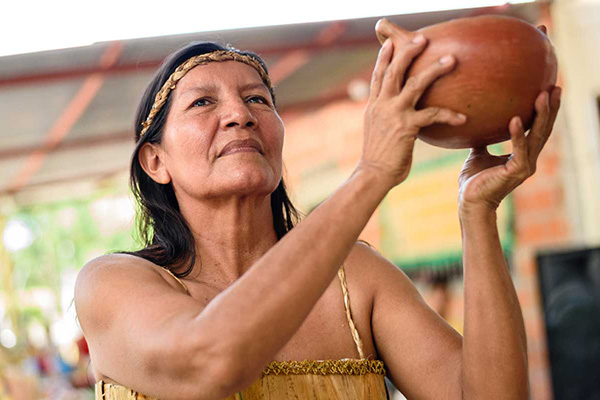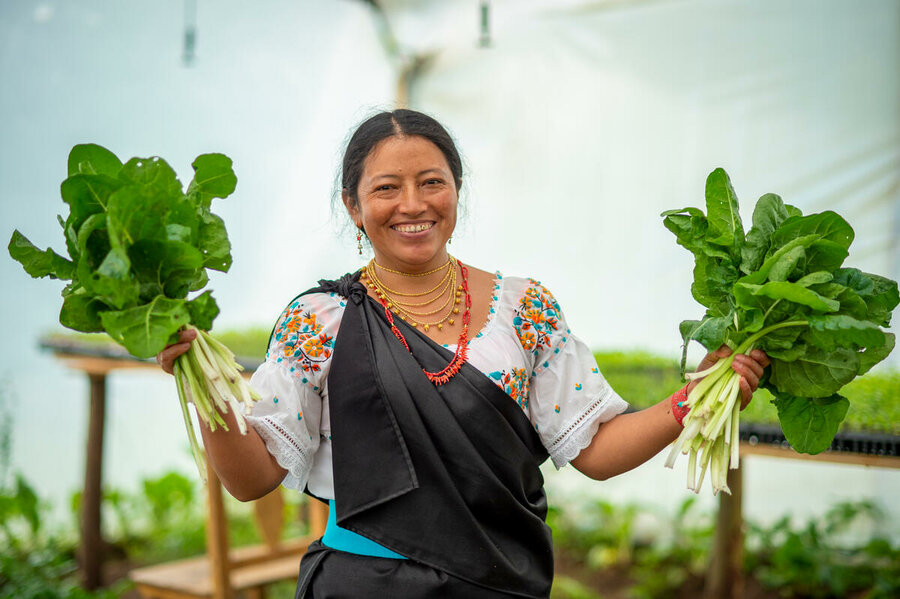Worldwide, there are approximately 200 groups of Indigenous Peoples currently living in voluntary isolation or making their first contact with the outside world. While there is no formal, legal definition of this status, ‘Indigenous Peoples in isolation’ are typically villages with little or no contact with other peoples or communities. The Matsés native community, comprised of 3,200 people, live in voluntary isolation in the Amazon Forest along the Javari River in Peru. Their ancestral territory, spanning 512,000 hectares, was officially recognized in December 2020, making the Matsés the first indigenous community in Peru to achieve this status.
Indigenous Peoples
Paraguay’s indigenous communities are some of the most vulnerable and marginalized people in the world. UNOPS is helping them overcome the everyday challenge of access to safe drinking water.
Across the globe, the way Indigenous Peoples produce, transform and consume food is based on a deep knowledge of the local ecosystems. WFP is tapping into this knowledge to fight hunger.
Indigenous peoples make up just over 6 percent of the world's population but are three times more likely to live in extreme poverty than non-indigenous people, and account for nearly one-fifth of the world's poor. The World Food Programme (WFP) works with indigenous peoples in Africa, Asia and Latin America to improve their food security and resilience in the face of inequality, discrimination and climate change. Ahead of the International Day of the World's Indigenous People on August 9, WFP shines a light on some little-known facts about indigenous communities - and how the organization supports them.
Around 200 groups of Indigenous Peoples live in voluntary isolation and initial contact. They mainly reside in remote forests in Latin America, Asia, and Oceania. Their survival is intricately linked to their environment, and any habitat disruption or exploitation poses severe risks, including disease exposure due to their lack of immunological defenses. On this International Day of the World’s Indigenous Peoples, the focus is on protecting their rights, which are crucial for the conservation of forests and the diversity of cultures and languages. Spread the message. Join our event.
During the Permanent Forum on Indigenous Issues, young activists discuss their lives and efforts to preserve their languages and cultures.
San Juan Comalapa is an agriculturally based municipality located in the central highlands of Guatemala. The majority of the population consists of indigenous Mayan-Kaqchikel peoples who rely on farming for their livelihood. In these territories, youth frequently migrate to other countries due to the lack of employment and business opportunities. Young indigenous women are the most affected, having fewer possibilities to get well-remunerated jobs. To provide viable livelihoods and prevent outmigration, the Comalapan Producers Association (ASPROC) offers capacity-building and training activities for young farmers in the region.
The AIM4Forests programme, launched by Food and Agriculture Organization of the United Nations (FAO) and the UK government, aims to provide countries with technological means to combat deforestation and actively involve Indigenous Peoples in forest monitoring. The programme has already begun implementation in 11 countries, including Papua New Guinea, where it combines modern technology with traditional knowledge to halt deforestation and restore degraded land. Custodians like Besta Pulum can now monitor their forest area using high-resolution satellite imagery and Open Foris Ground, a tool that allows them to demarcate their forest and monitor it using Google Earth.
In Paraguay, indigenous peoples lack access to basic needs such as adequate food, education, housing, justice and health, which puts at risk the achievement of most national and international commitments, including the Sustainable Development Goals. UN Human Rights supports Paraguay’s efforts to adopt a social protection system that integrates human rights, alleviates structural inequalities and generates sustainable growth. With funding from the Surge Initiative, the Office is working with the government, civil society, human rights institutions and academia, providing technical assistance and analytical data, and enhancing capacity to build institutional and financial capacity to ensure social security for all.
Nenquimo, a UNEP advocate, fronted a lawsuit that banned resource extraction on 500,000 acres of her ancestral lands. The victory of that court case has brought new hope to Indigenous communities.
The United Nations Permanent Forum on Indigenous Issues (15-26 April) is a high-level advisory body that provides expert advice, raises awareness on indigenous issues, and promotes the full application of the UN Declaration on the Rights of Indigenous Peoples. The Forum celebrates a yearly meeting since 2002 to discuss socioeconomic issues concerning indigenous communities. This twenty-third session will take place at UN Headquarters in New York and will focus on improving the self-determination rights of Indigenous people with a focus on the perspectives of Indigenous youth.
Olinda Silvano is an artist and leader in a Shipibo-Conibo indigenous community in Peru’s capital city, Lima. She is determined to overcome the challenges she and her people face, including discrimination, lack of social protection and housing. She believes education is the best inheritance we can give. Explore the full multimedia story on ILO’s Voices.
With IFAD’s Indigenous Peoples’ Forum around the corner, IFAD focuses on native communities across the world. First up, we hear from IFAD’s Ilaria Firmian, a Senior Technical Specialist on Indigenous Peoples, then a discussion on gender and land rights, climate change and food with indigenous chefs, activists, and experts. We learn more about free, prior and informed consent and hear from IFAD Goodwill Ambassador Sabrina Dhowre Elba and climate reporter Qasa Alom in Bangladesh.
Photo: © IFAD/Michael Benanav
Indigenous women like this Ecuadoran farmer have precious ancestral knowledge about growing and using traditional foods. They are the backbone of their families and communities — and make up roughly one-eighth of Latin America’s rural population. Even more crucially, perhaps, they keep and transmit precious ancestral knowledge on growing and using traditional foods, whose importance is only now being recognized. Yet the vital role the region’s Indigenous rural women play in their communities and society is very seldom acknowledged, much less celebrated. WFP helps to support Indigenous rural women to overcome historic barriers, fully harness the ancestral wisdom they carry, and contribute on an equal footing to the life of their communities.
Indigenous peoples offer us valuable ways to address the global water crisis through their traditional practices, both in terms of the sustainable management of aquatic ecosystems and the democratic governance of safe drinking water and sanitation. In the worldviews of indigenous peoples, water belongs to everyone and should remain available to all, as a common good. Voicing their concerns, indigenous peoples pointed out numerous challenges on water rights they face that have undermined their access to clean water and proper sanitation, according to a new OHCHR report.



